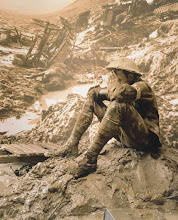A dragon lives forever but not so little boys/Painted wings and giant rings make way for other toys. (Puff the Magic Dragon, 1963)
On Thursday I took a late afternoon flight from Beijing’s brand new airport terminal. From above, the terminal is something else, a mammoth red and gold structure, whose graceful dragon-like form symbolically coincides with some of the other high-profile buildings sprouting up around the capital, namely, the Great Egg and the Bird’s Nest (otherwise known, respectively, as the National Theater and the Olympic Stadium). From inside, what is reputedly the world’s most advanced airport terminal has a ways to go in terms of airport security, or at least in protecting outgoing flights from the dangers of Friday night kiddush-observing passengers. After my Kedem grape juice-box was flagged by security (and after the guard took several puzzling minutes to carefully unwrap my tefillin), the guard lamely asked that I go back and check it in. After hemming and hawing some (who--and how--checks in a four-inch juicebox?!), I agreed. The guard then left me to my own devices, and after gathering up the rest of my stuff, I was sorely tempted to ignore his request and simply head toward my gate. So I did. Whether out of neglect or a desire to not mess with the foreigner, no one said a word. After arriving at my gate, however, my better instincts kicked in and I raced back to the check-in counter, checked in the bite-sized juice-box, and minutes later, was safely on my way to Chengdu.
Thanks to my Shabbat observing ways and the generosity of the U.S. government, I had ample opportunities in June 2007 to stroll around the streets of Chengdu. Friday morning, however, a run rather than a stroll was called for and so I went with the usual plan when setting off for a run in an unfamiliar city: find the closest body of water and hug its banks until they return me to where I started. The usual plan works especially well when the body of water turns out to be a lake. Rivers trump lakes in Chengdu, however, and so my two-hour plus jaunt to the northeastern edge of the capital of Sichuan province came by following the meandering Funan River. When you are next in Chengdu, I highly recommend following the path of the river as tea-houses, public parks, and even a waterpark hedge the pleasant footpath that runs alongside the waterway. I don’t particularly recommend taking my route, however.
Instead of following the river into the heart of the urban area I had explored last summer, I ran alongside the northern bank to the city’s outskirts. Crumbling urban sprawl eventually gave way to small plots of crops nestled amidst factories, and when the river finally trickled to an end by a lumberyard, it was high time to cross the stream and turn back. This is when things got a little messy. Factories prevented me from retracing my steps along the southern bank of the river. Instead I stumbled through endless shantytowns, dodging alike the mangy dogs and old folks working in the bitesize fields adjacent to their dwelling. When a rail-track intersected my path, I followed it on a hunch. When the track hit a metal fence, I suppressed my instinct to slip under the corroded barrier and instead followed the path along the brick wall that bordered the railway station. My instinct might have paid off but the hunch paid off in spades when several miles of twists and turns ended and a railway bridge I had passed (and had photographed at length) during the incoming leg of my journey came into view. There are lessons to be learned from my first run in Chengdu. Rather than dwell on them now, and considering I have pointedly not shared the most fascinating parts of my first twenty-four hours in Chengdu, I’ll leave them for the future.



